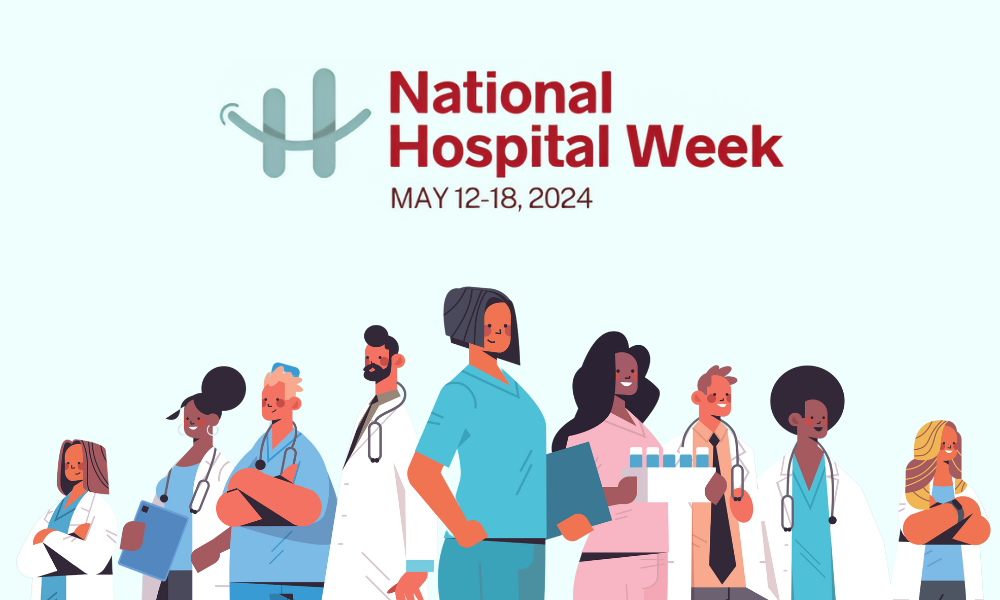Locums Digest is Locumpedia’s roundup of hot topics, top stories, and social media posts of interest to the locum tenens and medical communities. Subscribe to our newsletter to receive Locums Digest before it’s published here.
Locum Tenens Should be Called upon to Battle Second COVID-19 Surge
So what’s the latest on the spread of COVID-19 across the US?
As of this writing, the number of US coronavirus cases has reached 4.7 million, with roughly 1.5 million (roughly 32%) having recovered from the virus. As the numbers of new cases and hospitalizations rose in 44 US states or territories, more than 50,000 people were hospitalized and more than 150,000 had died.
“Hospitals in hot spots across the country are expanding and even maxing out their staff, equipment and beds, with doctors warning the worst-case scenario of hospital resources being overwhelmed is on the horizon if their states don’t get better control of the coronavirus,” according to a July 7 (updated July 16) Vox article.
Sunny States Surge Worst
Although the number of new cases is going down as of August 4, here are some statistics from recent hotspots.
- As of July 22, only 13 percent (224) of Arizona’s adult intensive care unit beds were available in facilities across the state.
- California surpassed New York in the number of COVID-19 cases (421,286 to New York’s 408,886). However, the Empire State still leads the country in fatalities (32,558), followed by New Jersey (15,707), Massachusetts (8,468), California (8,047).
- Compared to only about 1,500 hospitalizations on April 15, Texas has now surpassed 10,000 (about 17% of the total US hospitalizations).
- On Friday, July 24, the South Florida Sun Sentinel reported that Florida had surpassed 400,000 COVID-19 cases. Reporter Marc Freeman said another 136 COVID-19 fatalities brought the state’s death toll to 5,768. “Statistics show that 82 percent of residents who have died were 65 or older,” he noted.
- US hospitals likely will spend almost $4 billion on personal protective equipment (PPE) in the second half of 2020, according to the American Hospital Association (AHA).
Also, personal protective equipment (PPE) was in short supply again once again.
Please Pass the PPE
A July 7 story by the Associated Press highlighted that, just as the federal government began replenishing its stockpile of PPE and respiratory equipment in mid-June, the country began experiencing another surge in COVID-19 cases. The news wire noted the lack of equipment in hot spots like New York in March and April “forced states and hospitals to compete against each other, the federal government and other countries in desperate, expensive bidding wars.”
AP quoted Rear Adm. John Polowczyk, who oversees coronavirus-related supplies for the White House, as having told Congress in early July that one-fourth of the states had less than a 30-day supply. This was despite the fact that, as of June 10, FEMA had distributed, or facilitated distribution of, more than 74 million N95 masks and 66 million pairs of gloves, among other supplies.
Recognizing potential PPE shortages, the US Food and Drug Administration (FDA) in late April issued a letter to healthcare providers entitled, “Surgical Mask and Gown Conservation Strategies” to make the most of the supply available. And the CDC (Centers for Disease Control) updated its guidance to healthcare workers on July 16.
States See Staffing Shortages
It now appears that staffing shortages have become equally, if not more, concerning than the lack of enough PPE; medical equipment and bed capacity resulting from the pandemic, according to Vox. For example, Houston Methodist had already brought in out-of-state nurses and asked admin staff with nursing certifications to help out clinically.
“Rural hospitals in Texas aren’t running out of beds yet, but they are running into a staffing shortage,” said John Henderson, whose trade association represents them. He noted the state “has already sent about 2,300 volunteers to the Rio Grande Valley, one of the hardest-hit areas in the state. Other areas are requesting that workforce support,” Henderson says. “But there’s not much more in terms of resources to be sent.”
Vox writers Eliza Barclay and Dylan Scott also talked with Justin Senior, CEO of the Safety Net Hospital Alliance of Florida, who said that “staff is the biggest concern for hospitals at the moment—in particular, making sure that they don’t burn out and have enough PPE to stay protected from the coronavirus.”
Locums Offer Flex Staffing
Although they present additional cost to hospitals already hurting financially from the coronavirus pandemic, locum tenens clinicians offer care continuity while bridging gaps in staffing. Whether filling in for ill (or laid off) clinicians or expanding coverage for facilities overrun by critically ill patients, locum tenens staffing firms can mobilize providers quickly and deliver them where needed.
Our first article in this series focused on how “flexibility” described how the United States has fought COVID-19. At the federal level, the Centers for Medicare & Medicaid Services (CMS) in mid-March relaxed government regulations to give clinicians, healthcare facilities and states maximum flexibility. At the state level (as of May 11) 49 states, plus Guam, the Commonwealth of Northern Mariana Islands, and Puerto Rico had modified clinician licensing regulations in response to COVID-19.
Meanwhile, healthcare facilities compressed credentialing processes, which typically require between 90 and 120 days, so out-of-state providers could back up clinical staffs under siege.
Locum tenens physicians and other clinicians can play a role to play in crises. They are the “free agents” who travel out-of-state, around the country, and even around the world to fill gaps in clinician coverage for a variety of reasons. In other words, locum tenens clinicians are the ultimate flexible staffing resource.
All News Is Locums
LocumTenens.com Survey: COVID-19 ‘Has Turned Healthcare Upside Down’
(Edited from HealthLeadersMedia.com, story by Christopher Cheney, July 27, 2020)
A recent LocumTenens.com survey indicates the coronavirus pandemic has profoundly affected healthcare professional employment, clinician burnout and telemedicine.
Conducted in June 2020, the survey highlights information collected from 940 healthcare professionals in 35 medical specialties. Survey respondents were 45% employed, 30% locum tenens/independent contractors, 13% practice owners/partners, 6% unemployed, and 3.5 percent retired.
“The coronavirus pandemic has turned the healthcare industry upside down; and now, more than ever, the job market for clinicians is in a constant state of flux,” Franklin said. He noted that as the number of critical care clinicians and hospitalists needed in hotspots across the country increased, the number needed in other specialties–especially those associated with elective procedures–dropped dramatically.
Franklin said the clinician job market is rebounding, however. “As we begin to see an uptick in elective procedures, or as procedures that were once considered elective are now becoming urgent due to a delay in care, we are seeing demand for clinicians across all specialties increase. More patients are beginning to resume in-person primary care visits, too.”
Key survey findings included:
- 64% of unemployed respondents (6% of the total) reported losing their jobs because of COVID-19, with the highest rate of unemployment (9%) among those who’d worked five years or less.
- 88% of physician practice owners/partners (13% of the total) said they were very (54%) or mildly (34%) concerned about the future of their practices.
- Among employed respondents (45% of total), more than half (54%) represented organizations who had either furloughed or laid off employees due to COVID-19: 28% had seen furloughs, 8% had witnessed layoffs, and 18% had seen both.
- 78% of respondents said patients were canceling appointments in fear of infection.
- Almost three-quarters (74%) of respondents said their organizations had used more telehealth services because of COVID-19, and 44% said they’d invested in new technology solutions to facilitate remote communication with patients.
- 73% of respondents said they were concerned about newly uninsured patients.
- 71% reported a decrease of at least 25% in patients’ receiving preventive care.
- 52% reported increased stress, burnout or other mental health issues.
Burnout was a major issue affecting clinicians well before the pandemic struck, but the pandemic has exacerbated the problem, Franklin said. “The pandemic has highlighted not only the significant work our clinicians do to care for our patients, but also the work we need to do to ensure we take care of our clinicians.”
Anatomy of Locum Tenens Contracts:
A Physician’s Guide
(Edited from KevinMD.com. Article by Jack A. Gordon, Esq., and Andrew E. Sarti, Esq., July 22, 2020)
Increased clinician demand resulting from the COVID-19 pandemic has put physicians in a better position to negotiate locum tenens contracts. However, too many practitioners sign them without fully understanding their implications. This is a mistake. A well-drafted locum tenens contract (a) protects the physician’s interests beyond compensation, (b) anticipates and addresses disputes, and (c) limits risks.
What Physicians Need To Know
Physicians provide locum tenens services through third-party placement agencies or directly to healthcare facilities. Although agencies market themselves as physicians’ advocates, their primary loyalty is to the clients that pay their fees–the facilities they represent. This is why hiring attorneys well-versed in drafting and negotiating locum tenens agreements is a good idea.
Locum tenens contracts vary among agencies and facilities. Some use blanket master services agreements. Most of the time these are signed before clinicians are placed. They are supplemented by written locum tenens assignments (e.g., work orders, statements of work, confirmations) specifying facility location, dates of engagement, compensation, and possible modifications to the master services agreement.
A basic, but still important, provision in any locum tenens agreement is its term–i.e., how long it remains in effect. An “evergreen clause” automatically renews the term for successive periods of time. Evergreen provisions present advantages and disadvantages for physicians.
Termination
Termination provisions allow either party to end the contract. These provisions can differ considerably based on the reason for termination. “Without cause” means one party can terminate the agreement and/or assignment for no reason, usually following a specified period of written notice. The main issue here is what amount of notice is best for the provider.
“For cause” means the healthcare facility can terminate you either immediately, or after a “cure period” of time if the triggering issue is not adequately addressed during that time period. The list of for-cause events often includes reasons like “failure to perform physician’s duties to the reasonable satisfaction of the hospital.” For these “curable breaches” it is important the physician insists on notice and an opportunity to cure.
It is important how the termination is characterized because the consequences can differ greatly. Consequences aren’t always easy to spot because they’re usually found in other sections of the agreement and obscured by legalese.
Restrictive Covenants
Restrictive covenants prohibit the physician from competing within a fixed geographic area, at certain facilities, or both for a period of time. They are governed by state law, which varies.
Many residents and fellows are under the misconception that noncompete clauses are unenforceable. However, New York, New Jersey and many other states enforce “noncompetes” when the restrictions are reasonable. In determining reasonableness, courts look to the scope (the types of services), the duration (the length of time), and the geographic limitations.
Malpractice Insurance
Medical malpractice insurance is a standard provision, but which party provides the coverage, the policy type, its term, the policy limits, tail coverage, and other important aspects vary widely.
The two main types are “occurrence” and “claims-made” policies. Occurrence policies cover the physician for incidents that occur when the policy is in effect, regardless of when the claim is made, while claims-made policies cover the physician if the policy is in effect when the claim is made. Accordingly, if the claims-made policy is not renewed, the physician is exposed to a gap in coverage. To avoid this, physicians should ensure that their agreements include an extended reporting endorsement, commonly referred to as “tail coverage.”
Compensation and Expenses
Pay for locum tenens positions is usually on a per-diem (daily or shift) or hourly basis, and the amounts are driven by market forces.
There are several provisions physicians should consider incorporating–like rate premiums (e.g., shift differentials; holiday, on-call or “call-back pay,” and escalators. Specifying which expenses–including insurance; licensing, credentialing and privileging fees; travel and housing costs–will be reimbursed. When expenses like housing are not needed, the provider should consider negotiating an increased rate instead.
“Boilerplate” Provisions
These seemingly innocuous clauses are usually found at the end of the agreement, and they can have significant practical and legal implications.
An “entire agreement” or “merger clause” states that the written contract is the complete expression of the parties’ agreement. This means the provider should not expect any statement not included in the written contract to be enforceable.
The “choice of law” and “forum selection” clauses affect the outcome of a contract dispute, as well as the amount and type of relief. Substantive and procedural law varies among jurisdictions and court systems. Usually both the governing law and the forum are in the same jurisdiction, although they can differ (e.g., the governing law could be in a corporate home office, while the venue is the agency’s location). Physicians often find they agreed to litigate disputes far from either their home or their normal place of work.
A “force majeure” clause should shield a physician against liability from failure to perform if the inability to perform is caused by a specified event beyond the physician’s reasonable control.
Conclusion
Physicians should understand that agencies and hospitals hire expert legal counsel to draft their locum tenens contracts to protect their interests. Physicians should retain their own attorneys to safeguard and uphold theirs. Click here for a complete version of this article.
This article is for informational purposes only. It is not legal advice. For guidance on your specific circumstances, please call or write. We are happy to help.
Jack A. Gordon and Andrew E. Sarti are attorneys with Kent, Beatty, & Gordon, LLP.
News to Use
- The American Hospital Association (AHA) has partnered with Microsoft, UPS, Kaiser Permanente, Goodwill, Merit Solutions and consulting firm Kearney to create HealthEquip, a smart application that connects hospitals treating COVID-19 patients with PPE donors in their areas. HealthEquip allows hospitals and donors to register their PPE needs and supplies online, then track and manage shipping through UPS to hospitals. The AHA is sharing the app with hospitals through its 100 Million Mask Challenge.
- Written by Andrew N. Wilner, MD, The Locum Life: A Physician’s Guide to Locum Tenens is an insider’s guide to locum tenens. “In 20 clearly written chapters, the author articulates the nuts and bolts of The Locum Life, according to amazon.com. “Physicians will learn how to find their first locum tenens assignment, run their own business, travel, and achieve the work/life balance of their dreams.”
Wilner’s book is available at amazon.com for $19.95.
- Establishing, Managing, and Protecting Your Online Reputation: A Social Media Guide for Physicians and Medical Practices, by Kevin Pho, MD, and Susan Gay
Online health information, combined with social media channels like Twitter and Facebook, have created a new generation of patients. They are empowered. They have a voice in their own care like never before. And, increasingly, they are using social media and physician review sites to choose their healthcare providers.
Dr. Pho’s book offers doctors a step-by-step guide on how to use social media to manage one’s online reputation. It also provides insider tips on how to respond to online ratings and how to work with major physician review sites.
Pho’s book is available from amazon.com for $46.49. (Used copy available for $10.27)
How ‘Bout This?
(Edited from Medscape.com)
When the Doctor’s Away, Locum Tenens Comes Into Play
By Alok S. Patel, MD, May 2, 2018
“I swear, every time I see a locum tenens job offer, I get tempted by
- Great pay
- Less hours
- Awesome location
“Earlier today, I saw a job offer near Lake Tahoe. Come on! I have considered the locum tenens job and I know some of you have, too.
“Anyway, I’m talking to one of my colleagues about all this stuff and she makes a really interesting point: how jumping into a new hospital system would affect our ability to take care of patients.
“Then I ask myself, “Would being a temporary doc make my life more difficult? Would I make more errors? Maybe not.
“A study comparing care provided by locums docs versus regular hospital employees showed no significant differences in 30-day mortality. Locums doctors did have higher Medicare B charges and longer in-patient stays, but lower 30-day readmission rates.
“Locums doctors have similar outcomes as your run-of-the-mill hospitalists. They might be more cautious and order more tests, but whatever. I think going locum would be an awesome adventure, and this research makes me feel better about it.
“What do you think? What is going to go through your mind the next time you see an email with a temp job, a fancy salary, and an opportunity to work in a pristine mountain town? Share your thoughts:
- Have you ever worked as a locum tenens physician?
- Would you consider a future locum tenens job in a hospital setting?
- If you’ve worked as a locum tenens physician, did you find it more or less satisfying than a full-time position?”








